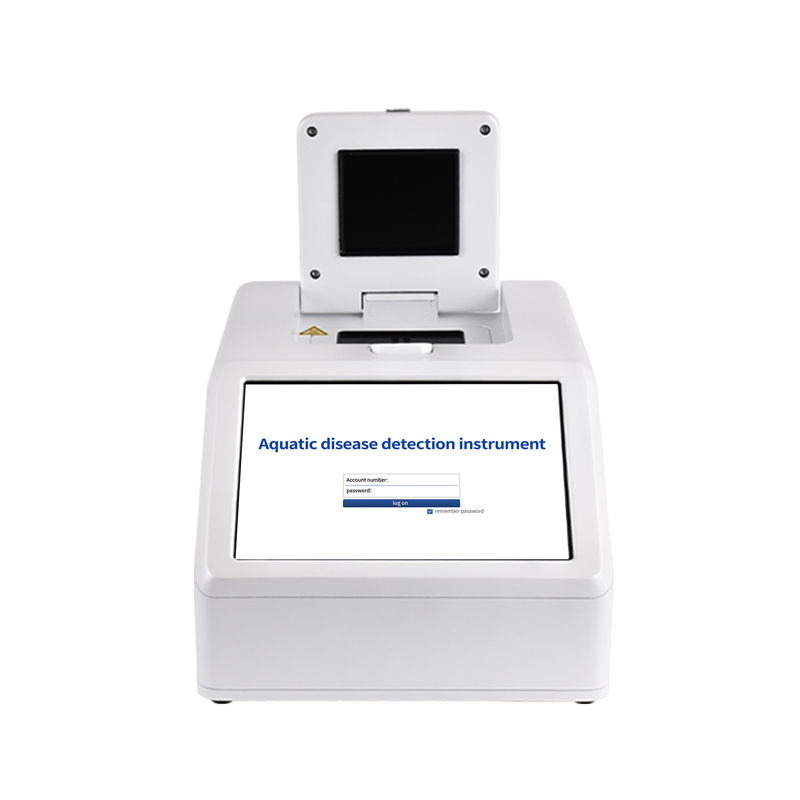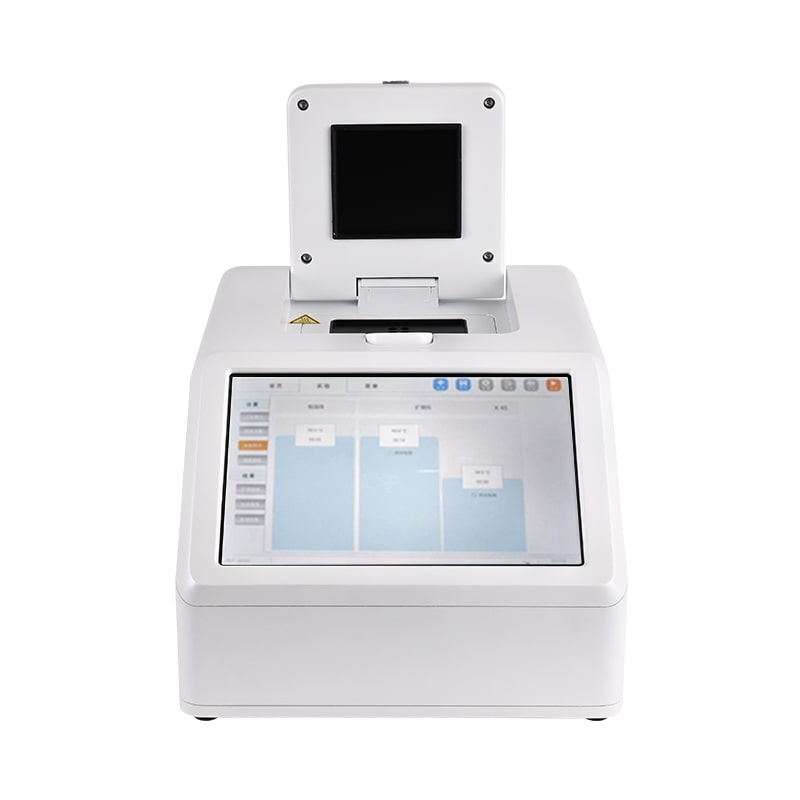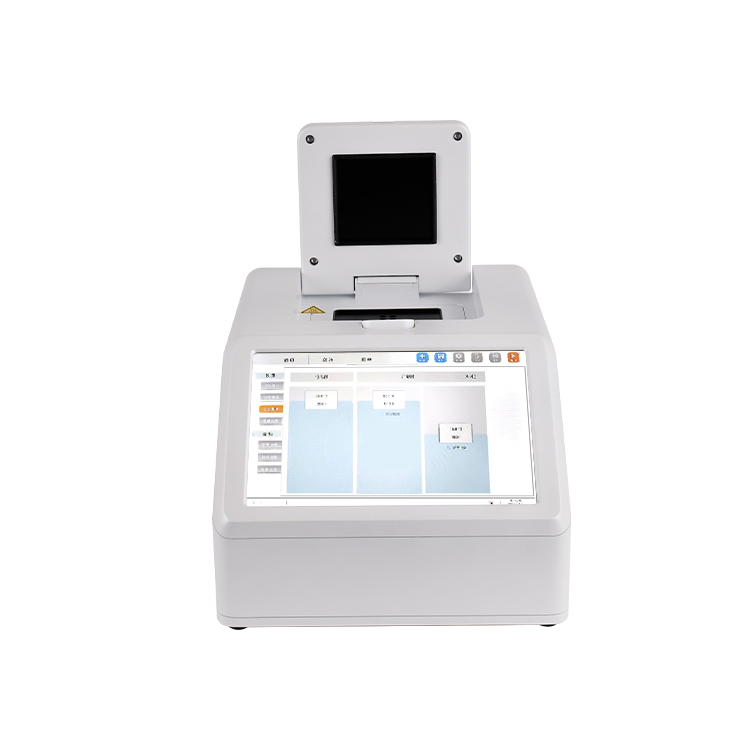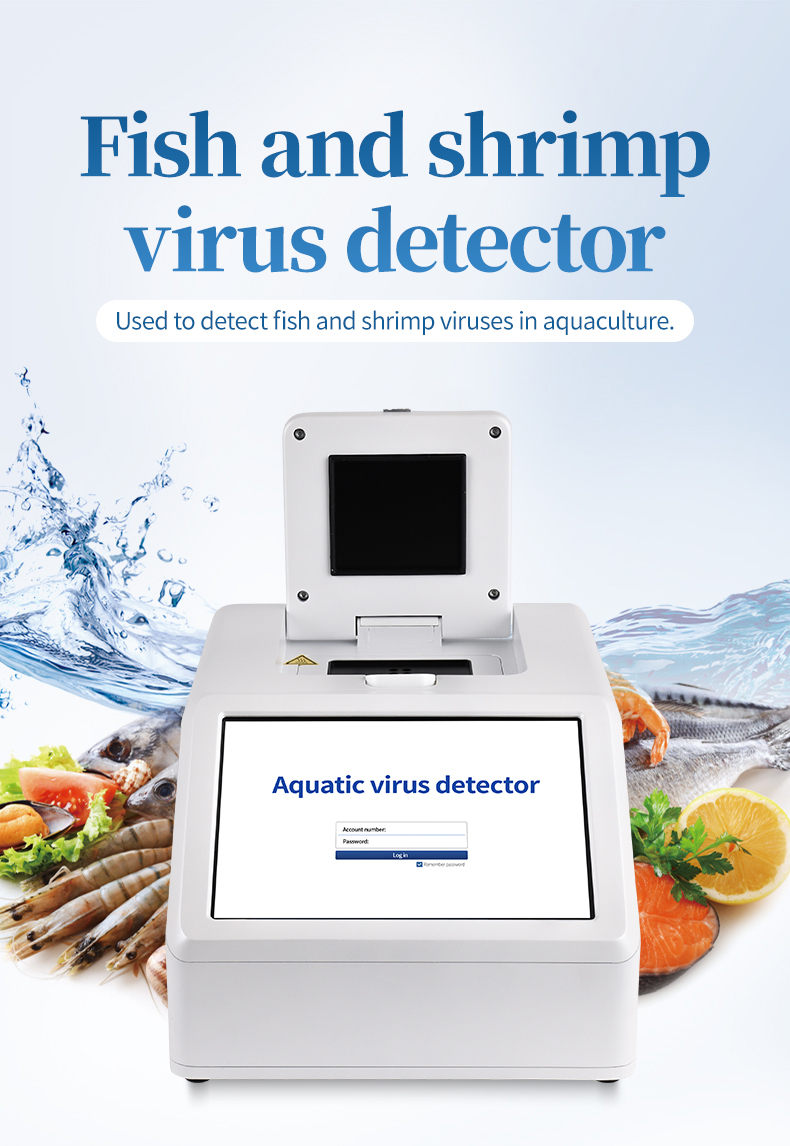
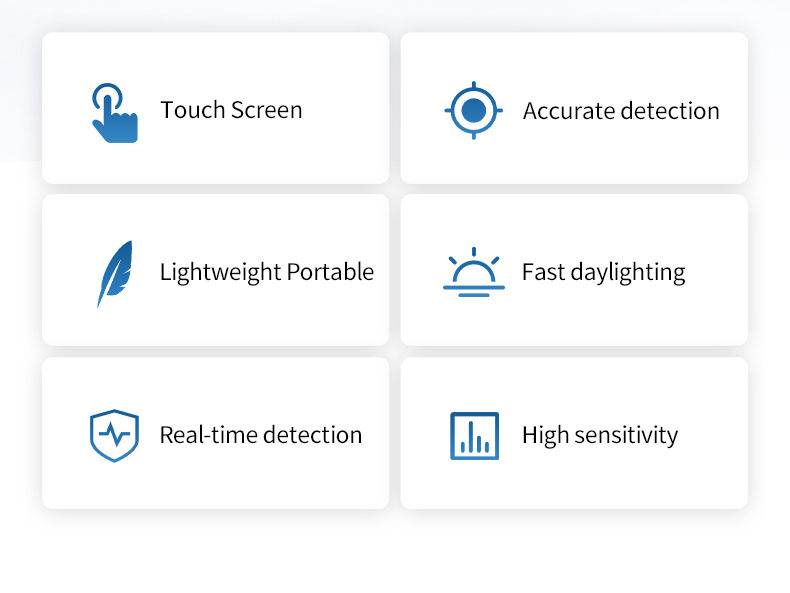
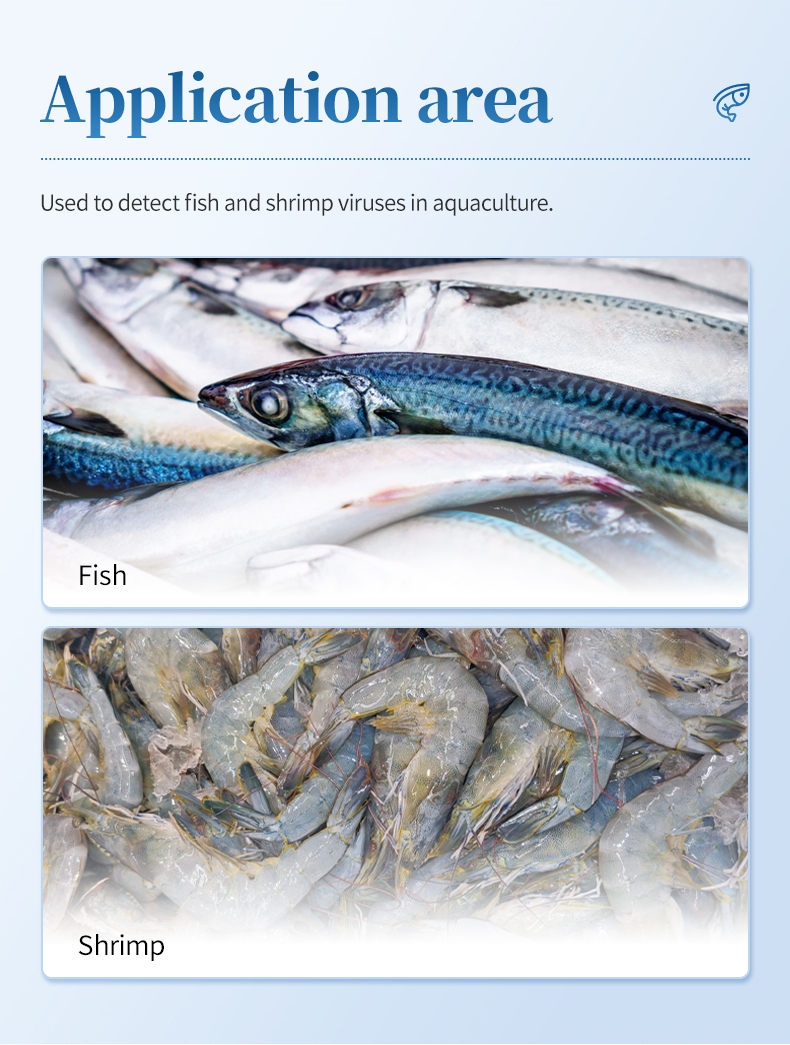
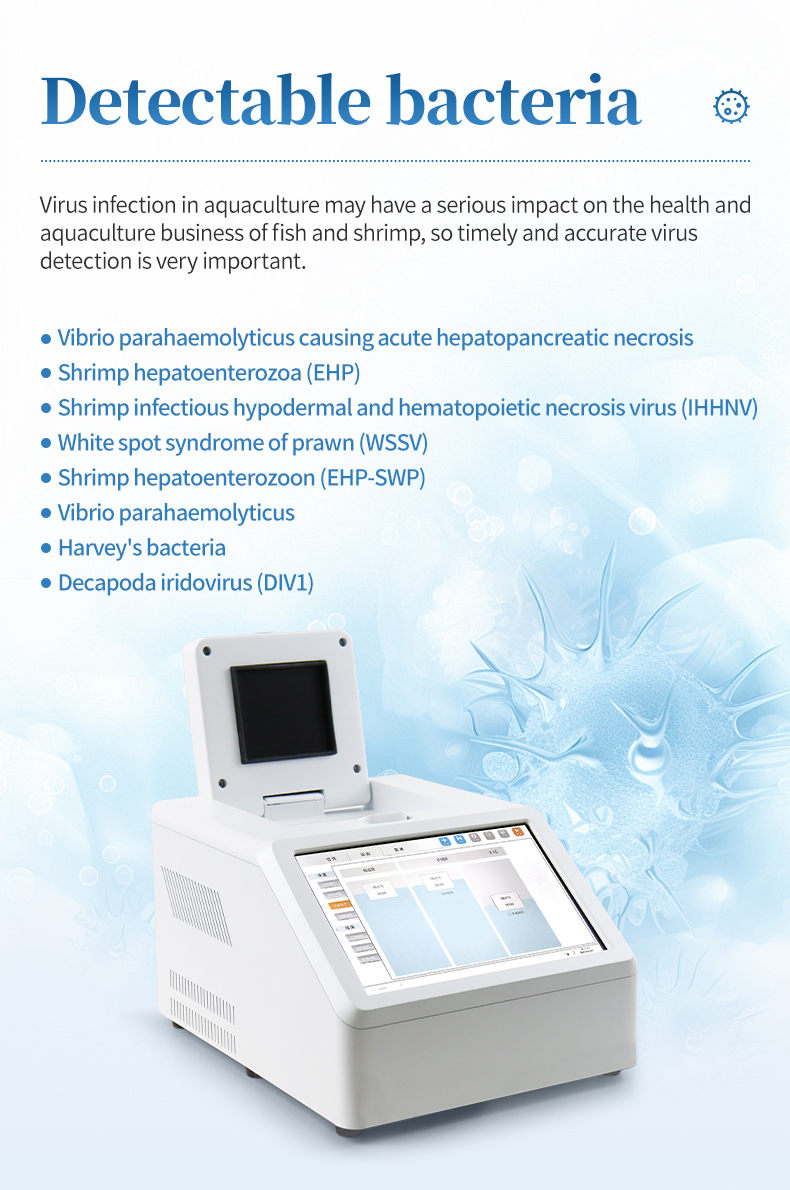
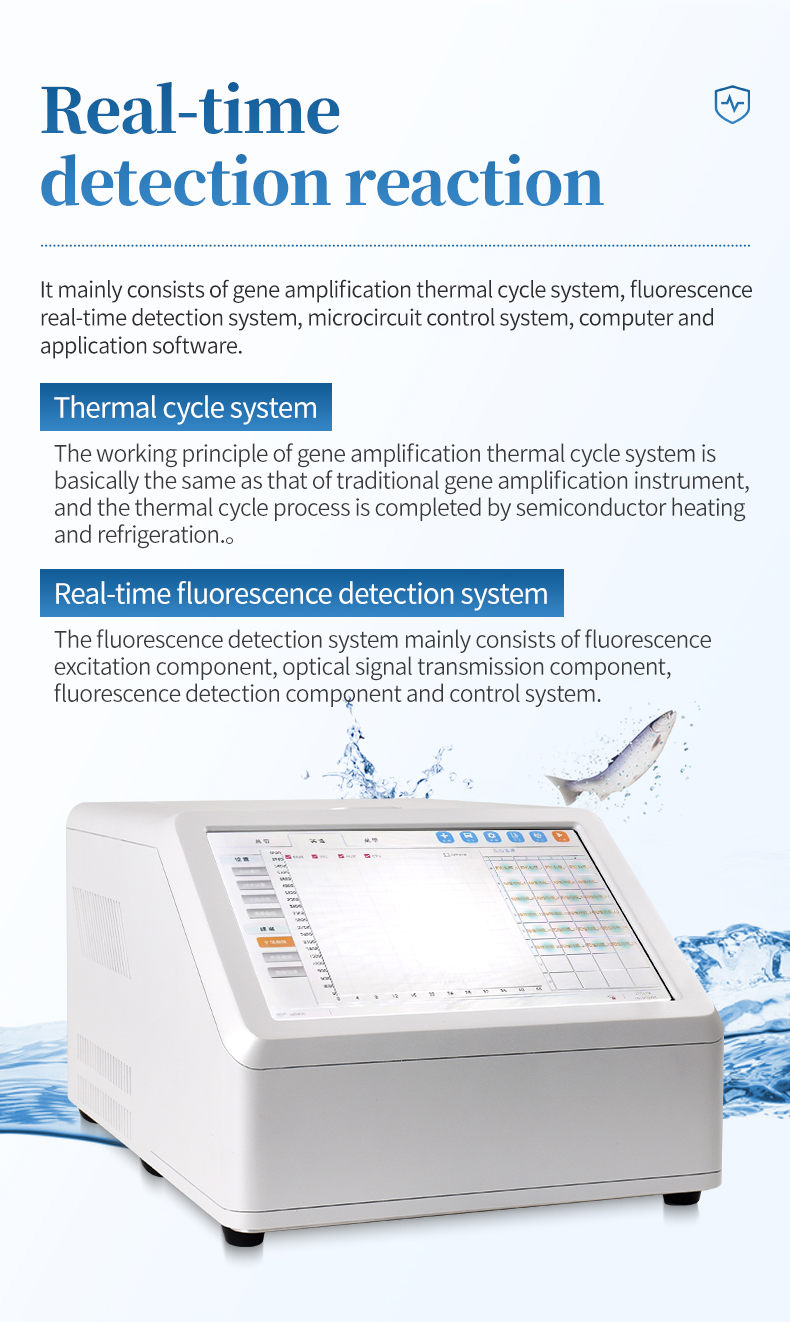
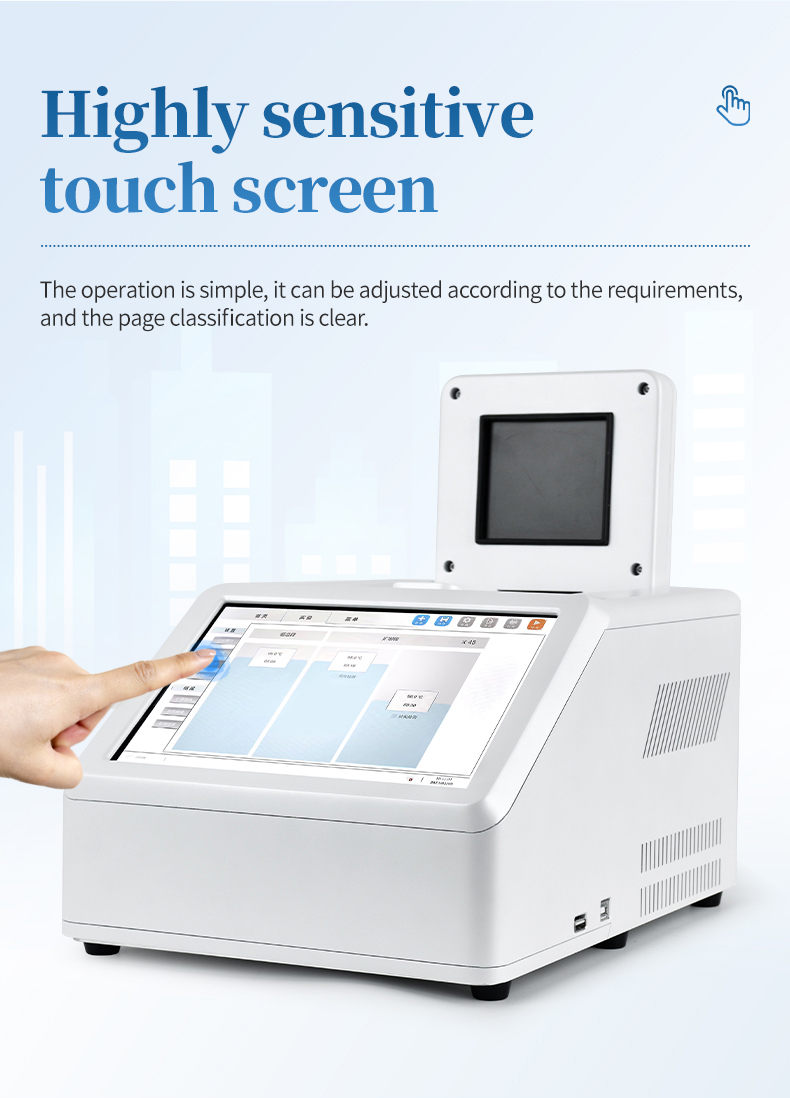




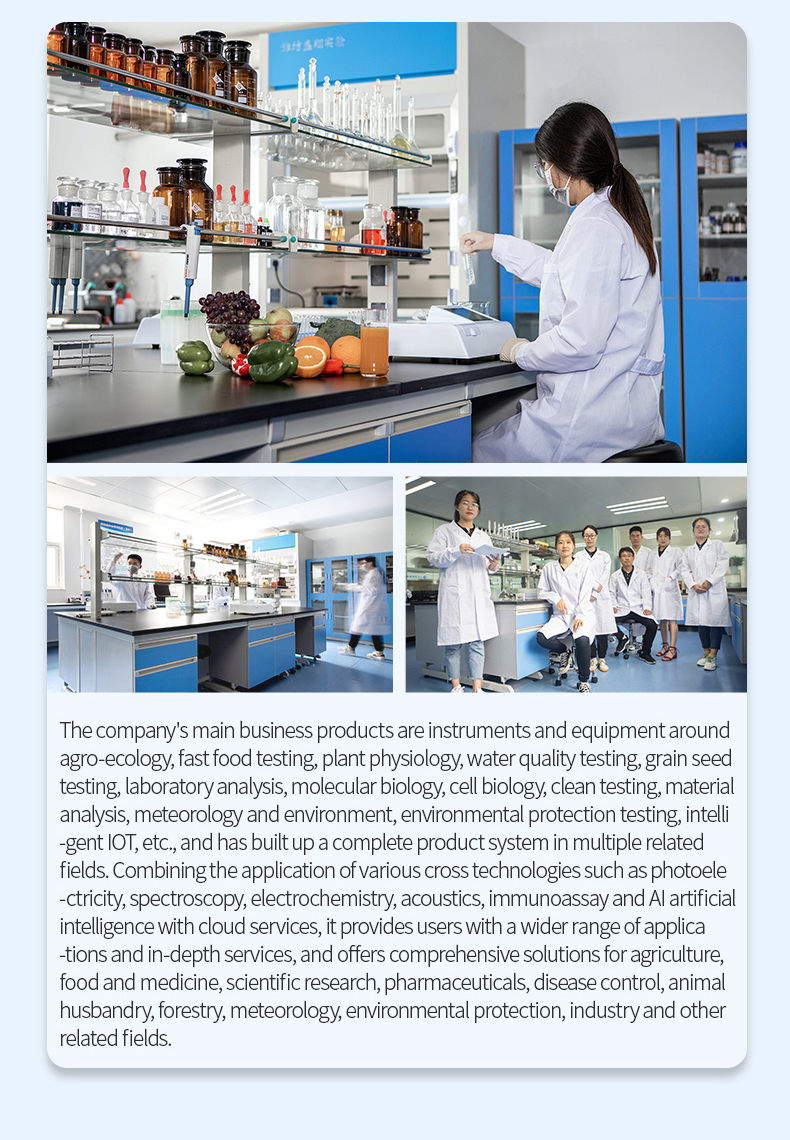
Summary:
Aquatic virus detector is a device used to detect viruses in fish and shrimp in aquaculture. In the aquaculture industry, viral infections can have serious impacts on the health and farming operations of fish and shrimp, making timely and accurate virus testing crucial.
The detected pathogens include Vibrio parahaemolyticus, Enterococcus faecalis (EHP), Infectious Subcutaneous and Hematopoietic Tissue Necrosis Virus (IHHNV), White Spot Syndrome (WSSV), Enterococcus faecalis (EHP-SWP), Vibrio parahaemolyticus, Harvey's bacteria, and Decapoda iridovirus (DIV1)
The aquatic virus detector adopts real-time quantitative polymerase chain reaction (qPCR) technology, which is a commonly used molecular biology technique for detecting viruses in aquaculture. The PCR detector can amplify and detect the nucleic acid sequence of specific viruses to determine whether they have been infected with specific fish or shrimp viruses.
Basic structure of the instrument:
The aquatic virus detector is an instrument for real-time detection of reactions, mainly composed of a gene amplification thermal cycle system, a fluorescence real-time detection system, a microcircuit control system, a computer, and application software. Two core functional modules are: thermal cycling system and real-time fluorescence detection system. The working principle of the gene amplification thermal cycle system is basically the same as that of traditional gene amplification instruments, using semiconductor heating and cooling to complete the thermal cycle process. The fluorescence detection system mainly consists of fluorescence excitation components, optical signal transmission components, fluorescence detection components, and control systems.
Equipment parameters:
Dimensions: 235mm * 385mm * 175mm (width * depth * height)
Weight: 5.6kg
Electrical parameters:~220V/50Hz, 255W
Data interface: USB 2.0 * 2 (two on the right)
Environmental parameters:
Operating conditions: Temperature: 10-30 ℃, Humidity: 20%~80%
Transportation and storage conditions: temperature: -20~55 ℃, humidity: 20%~80%
Altitude:<2500 meters
Noise level: A-weighted,<60dB
Sample parameters:
Sample size: 16 * 0.2mL
Test tube type: single tube, eight row, 16 well test tube
Sample volume: 15-100uL
Temperature characteristics:
Heating/cooling method: semiconductor heating/cooling
Temperature range: 4 ℃ -99 ℃
Maximum heating rate: ≥ 3.5 ℃/s
Average heating rate: ≥ 2.5 ℃/s
Maximum cooling rate: ≥ 3.5 ℃/s
Average cooling rate: ≥ 2.5 ℃/s
Temperature control accuracy: ≤± 0.01 ℃
Temperature accuracy: ≤± 0.1 ℃
Temperature uniformity: ≤± 0.3 ℃
Optical characteristics:
Number of fluorescence detection channels: 2 channels
Light emitting device: high brightness LED
Lighting device: high sensitivity, high signal-to-noise ratio photodiode
Adapt probes or dyes:
First channel: 470/520 FAM, SYBR Green
Second channel: 530/570 HEX, JOE, VIC
Detection sensitivity: 1 copy
Linear detection range: 100-1010 copies
Linear correlation coefficient: ≥ 0.999
Channel crosstalk: no crosstalk
Detection repeatability: ≤ 1.0%
Article address:https://www.molecularbio.cn/pro8/51.html




